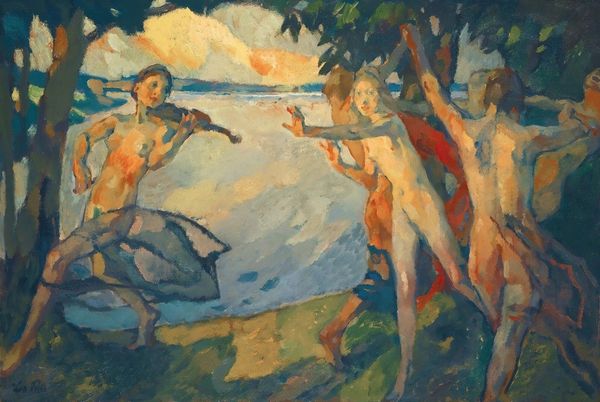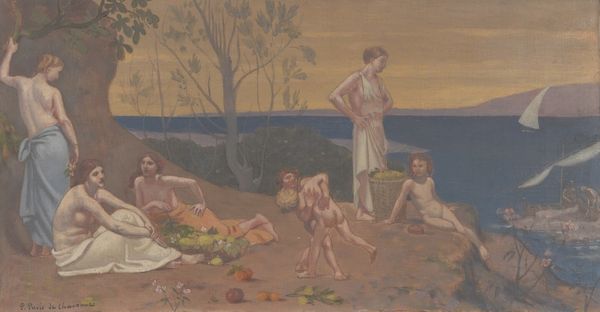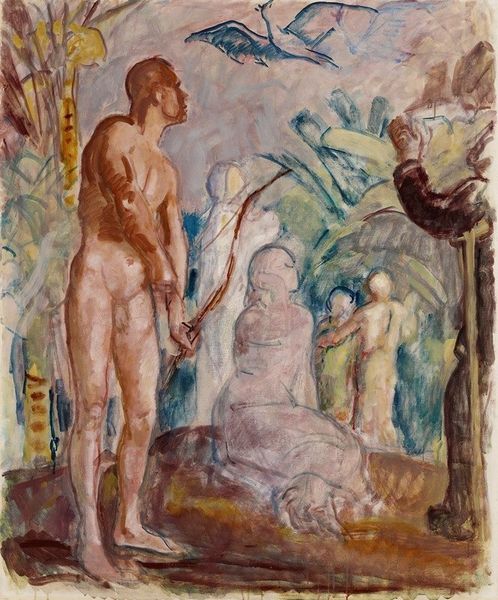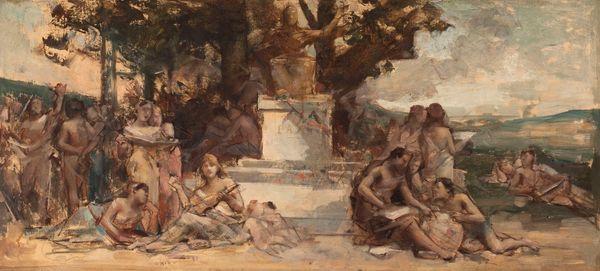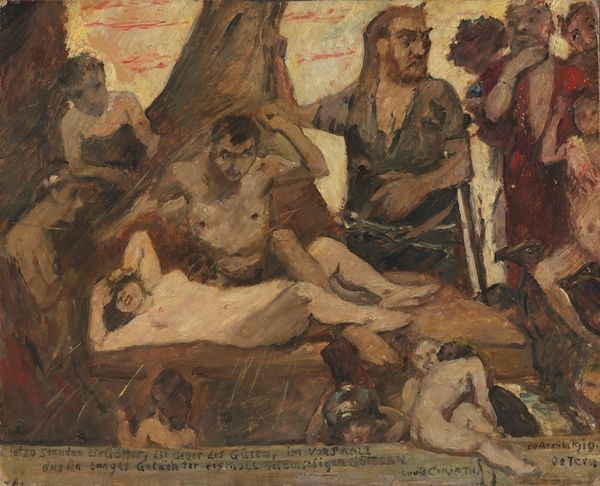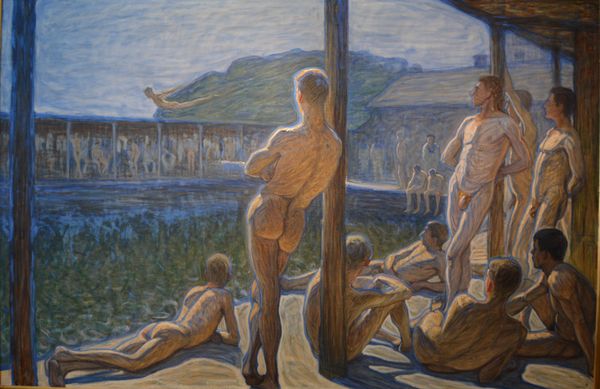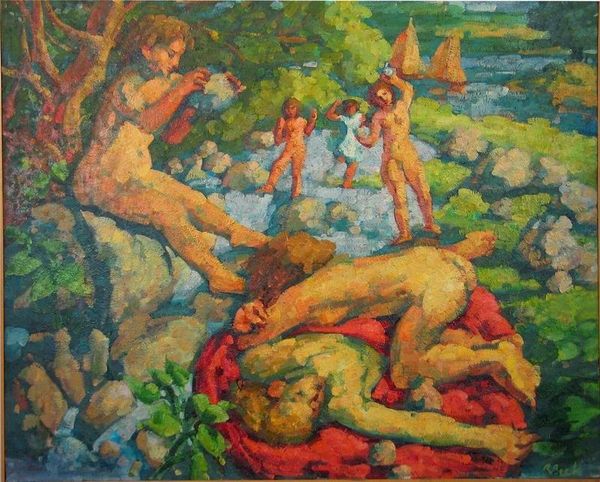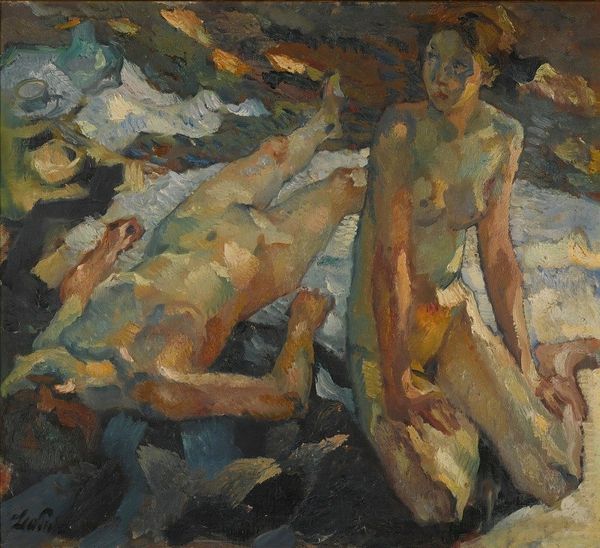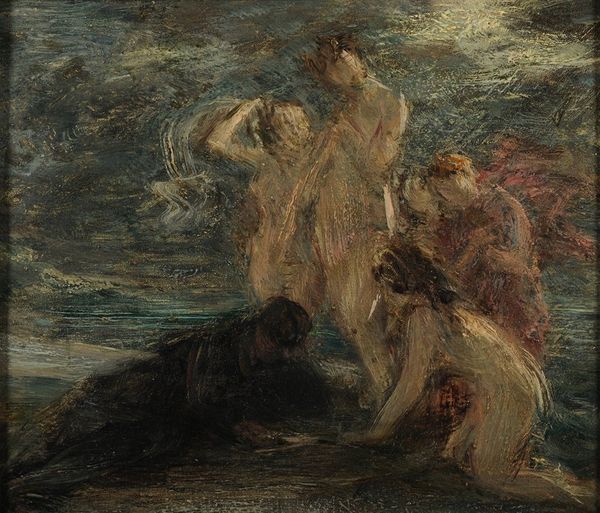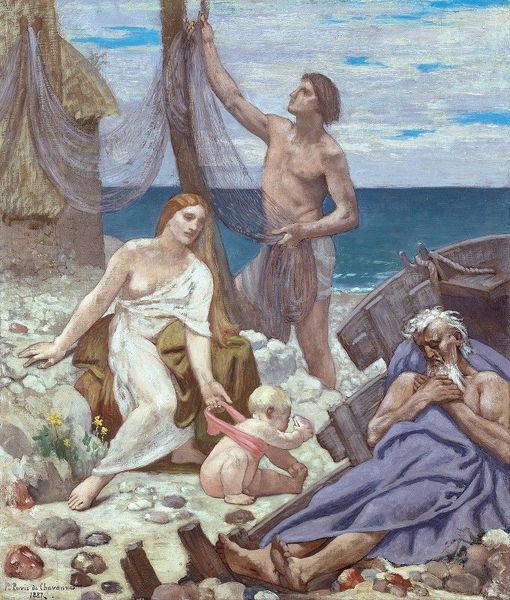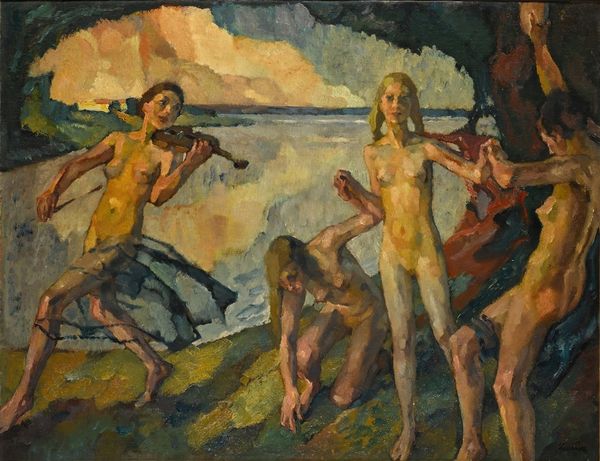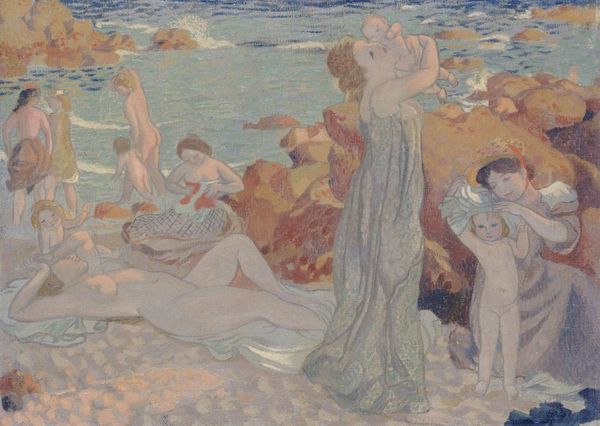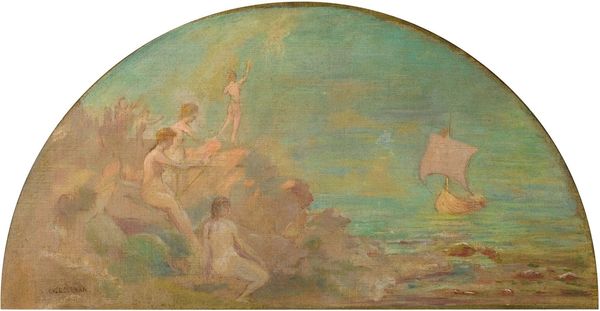
Copyright: Public Domain: Artvee
Curator: Magnus Enckell’s “Diana and Endymion,” created in 1921 using tempera and oil, presents a classical subject in a uniquely softened, almost dreamlike manner. Editor: My first impression is how hazy and muted it is, the colors barely there, like a memory fading. I wonder about his pigment choices here, what was available or considered desirable at the time? Curator: That subdued palette certainly enhances the emotional weight. Diana, the moon goddess, looks down on the sleeping shepherd Endymion. In mythology, she fell in love with him and, to preserve his beauty, cast him into eternal slumber. Enckell uses her gaze to capture both longing and sorrow. The crescent moon itself symbolizes her divine power, but here it’s rendered faintly. Editor: Interesting. What does it tell us that Enckell chose tempera, known for its rapid drying time, combined with oil? I imagine the effect would be quick layering and perhaps the ability to build a complex surface while maintaining that ethereal quality. Also, considering the socio-economic context, where would Enckell obtain these materials, and what would be the value placed on such luxury? Curator: Those materials would have been markers of status and education. The scene itself takes place in a liminal space, between earth and sea. The subtle gradation in color further reinforces this atmosphere, creating a sense of otherworldly romance. Diana's standing posture and proximity to the trunk perhaps reflects her rooted, yet still solitary, nature, bound to the landscape. Editor: Exactly! It really points to the dichotomy, and possible tension, between available resources and desired visual outcomes. How the artist navigated those limits must surely show up somewhere in the brushstrokes and the texture of the finished painting itself, or in some kind of cultural reference if you go looking for it. Curator: It leaves us to contemplate the lasting power of symbols and the poignant rendering of a timeless myth. Editor: A subtle reminder, then, of the physical resources embedded within those very symbols – labor and industry brought forth a vision, so to speak.
Comments
No comments
Be the first to comment and join the conversation on the ultimate creative platform.
